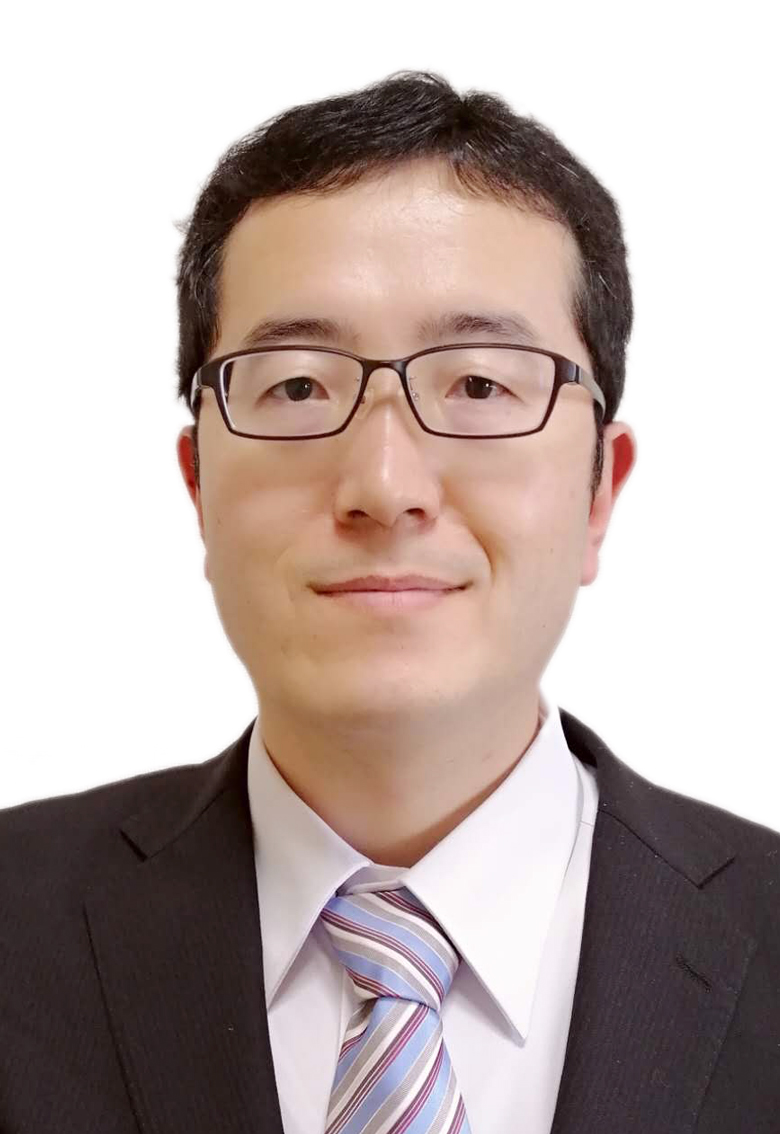
Ning DING
Ph. D.
Professor

Ning DING
Ph. D.
Professor
Algorithms and applications of large language models
Natural language processing
Human-computer interaction
Speech processing
Institute of Artificial Intelligence and Robotics
College of Artificial Intelligence
Xi'an Jiaotong University
Address: Room 309, Yifu Science Hall, Xianning West Road 28#, Beilin District, Xi'an
Postal Code: 710049
Email: ding.ning[at]xjtu.edu.cn
(To avoid spam, please manually change [at] to @)
I am actively recruiting talented undergraduate, graduate, and post-doc. Please send me your resume by Email if you are interested. Feel free to contact me if you have any questions.
2008.09-2012.03 Keio University (Japan), Ph.D degree
2005.09-2008.07 Xi'an Jiaotong University, M.E. degree
2001.09-2005.07 Xi'an Jiaotong University, B.E. degree
2023.08-Present Xi'an Jiaotong University, Professor
2020.09-2023.06 Alibaba, Algorithm Director
2012.04-2020.09 Toshiba (Japan), Research Scientist
N. Hamada, and N. Ding, “Source Separation and DOA Estimation for Underdetermined Auditory Scene” in Soundscape Semiotics - Localisation and Categorisation, H. Glotin, Eds, Publisher: InTech, 2014.
Jianlong Wu, Wei Sun, Tian Gan, Ning Ding, Feijun Jiang, Jialie Shen and Liqiang Nie, “Neighbor-Guided Consistent and Contrastive Learning for Semi-Supervised Action Recognition”, IEEE Trans. on Image Processing, Vol. 32, pp 2215 – 2227, 2023.
N. Ding and N. Hamada, “DOA estimation of multiple speech sources from a stereophonic mixture in underdetermined case”, IEICE Trans. on Fundamental, Vol.E95-A No.4, pp735-744, 2012.
N. Ding, M. Yoshida, J. Ono, and N. Hamada, “Blind source separation using sequential phase difference versus frequency distribution”, Journal of Signal Processing, vol. 15, No. 5, pp. 375-385, 2011.
W. Kasprzak, N. Ding, and N. Hamada, “Speaker localization and speech separation in two echoic mixtures”, Science-Future of Lithuania, vol. 3, No.1, pp. 43-49, 2011,
W. Kasprzak, N. Ding, and N. Hamada, “Relaxing the WDO assumption in blind extraction of speakers from speech mixtures”, Journal of Telecommunications and Information Technology, vol. 4, pp. 50-58, 2010.
N. Ding, Y.F. Fan, and G. Niu, “A summary of Surface-conduction Electron-emitter Display”, Vacuum Electronics, vol.2, pp. 15-18, 2007.
Jianlong Wu, Haozhe Yang, Tian Gan, Ning Ding, Feijun Jiang, Liqiang Nie, CHMATCH: Contrastive Hierarchical Matching and Robust Adaptive Threshold Boosted Semi-Supervised Learning. CVPR 2023.
Haozhe Yang, Xianqiang Gao, Jianlong Wu, Tian Gan, Ning Ding, Feijun Jiang and Liqiang Nie, Self-adaptive Context and Modal-interaction Modeling For Multi-modal Emotion Recognition. ACL 2023
Zorilă, C., Li, M., Hayakawa, D., Liu, M., Ding, N., Doddipatla, R. (2020) Toshiba’s Speech Recognition System for the CHiME 2020 Challenge, ICASSP 2020, pp.62-66, May. 2020
H. Fujimura, N. Ding, D. Hayakawa, and T. Kagoshima, “Simultaneous Flexible Keyword Detection and Text-dependent Speaker Recognition for Low-resource Devices”, ICPRAM 2020, pp.297-307, Valletta, Malta, Feb. 2020.
K. Fujimoto, N. Ding, and N. Hamada, “Multiple Sources' Direction Finding by using Reliable Component on Phase Difference Manifold and Kernel Density Estimator”, ICASSP 2012, pp.2601-2604, Kyoto, Japan, Mar. 2012.
N. Ding and N. Hamada, “DOA estimation in underdetermined stereophonic mixture by kernel density estimator,” ISPACS 2011, pp.1-5, Chiangmai, Thailand, Dec. 2011.
N. Ding and N. Hamada, “Speaker localization and speech separation using phase difference versus frequency distribution,” EUSIPCO 2011, pp.250-253, Barcelona, Spain, Aug. 2011.
M. Sekigawa, M. Yoshida, N. Ding, and N. Hamada, “Speech separation and localization by exploiting constraints on delay-time vector introduced by array configuration”, NCSP’11, pp.239-242, Tianjin, China, Mar. 2011.
N. Ding and N. Hamada, “DOA estimation by Hough transform in phase difference distribution versus frequency,” ISPACS 2010, pp. 277-280, Chengdu, China, Dec. 2010.
M. Yoshida, N. Ding, and N. Hamada, “Blind speech separation by integrating three pairs of phase differences of equilateral triangular microphone array,” ISPACS 2010, pp. 201-204, Chengdu, China, Dec. 2010.
J. Ono, N. Ding, and N. Hamada, “Sound Source Localization using Phase-Difference vs Frequency Plots,” APSIPA ASC 2010, pp.46, Biopolis, Singapore, Dec. 2010.
N. Ding, M. Yoshida, J. Ono, and N. Hamada, “Speech mixture separation and DOA estimation utilizing sequence of phase difference distribution”, NCSP’10, pp.341-344, Honolulu, Hawaii, U.S.A., Mar. 2010.
W. Kasprzak, N. Ding, and N. Hamada, “Blind localization and separation of two speakers based on two mixtures”, Proceedings of 2nd IEEE Workshop on Bio-Inspired Signal and Image Processing (BISIP), On CD-ROM, Vilnius, Lithuania, Mar. 2010
M. Kitagaki, C.L. Wang, N. Ding, X.Y. Zhang, G. Uchida, S.L. Wu, T. Shinoda, and H. Kajiyama, “Cathode Luminescence Study of MgO”. IDW’08, pp.1999-2000, Niigata, Japan, Dec. 2008.
丁寧,籠嶋岳彦,藤村浩司,田中大貴,早川大智,“少量キーワード発話データによるキーワード検出適応手法”.信学技報, vol. 119, no. 398, SP2019-48, pp. 25-29, 2020年1月.
丁寧,籠嶋岳彦,“多人数音声認識向け回り込み音声の抑圧方法”.日本音響学会2017年秋季研究発表会,松山,2017年9月.
丁寧,木田祐介,広畑誠,“音韻情報と方向情報を用いた発話間距離による話者クラスタリング”.日本音響学会2014年秋季研究発表会,札幌,2014年9月.
N. Ding, 藤本健, 浜田望, “Kernel density estimator approach for solving underdetermined source localization problem from arbitrary microphone configuration”, 第26回 信号処理シンポジウム, pp.422-427, 札幌, 2011年11月.
N. Ding, T. Shimada, M. Yoshida, J. Ono, W. Kasprzak and N. Hamada, “A consideration on time-frequency masking methods for speech separation”, 第24回 信号処理シンポジウム, pp.209-214, 鹿児島, 2009年11月.
丁宁,藤村浩司,信息处理装置及信息处理方法,CN112420020B,2024.5.3
吴建龙,杨浩哲,高先强,聂礼强,甘甜,丁宁,姜飞俊,基于动态上下文表示和模态融合的多模态分类方法及系统,CN116089906B,2023.6.16
吴建龙,丁沐河,聂礼强,董雪,甘甜,丁宁,姜飞俊,基于预习机制知识蒸馏的模型压缩方法及系统,CN115294407B,2023.1.3
吴建龙,孙玮,聂礼强,甘甜,李潇婕,丁宁,姜飞俊,基于近邻一致性和对比学习的半监督视频分类方法及系统,CN115311605B,2023.1.3
Ning Ding, Hiroshi Fujimura, Information processing apparatus, keyword detecting apparatus, and information processing method, United States 11961510, April 16, 2024
Ning Ding, Hiroshi Fujimura, Information processing apparatus and information processing method, United States 11823669, November 21, 2023
Ning Ding, Makoto Hirohata, Speech processing device, speech processing method, and computer program product,United States 10832685, November 10, 2020
Ning Ding, Takehiko Kagoshima, Voice processing device, voice processing method, and computer program product, United States 10504523, December 10, 2019
Ning Ding, Yusuke, Kida, Sound source direction estimation apparatus, sound source direction estimation method and computer program product, United States 9473849, October 18, 2016
Ning Ding, Yusuke, Kida, Makoto Hirohata, Speech processing apparatus and method, United States 9460714, October 4, 2016
丁寧、藤村浩司、情報処理装置、情報処理方法およびプログラム,日本特許第7191792号,2022.12.9
丁寧、藤村浩司、情報処理装置、キーワード検出装置、情報処理方法およびプログラム,日本特許第7098587号,2022.07.1
丁寧、音声認識装置、音声認識方法及びプログラム,日本特許第6903613号,2021.06.25
丁寧、籠嶋岳彦、音声処理装置、音声処理方法およびプログラム,日本特許第6800809号,2020.11.27
丁寧、広畑誠、音声処理装置、音声処理方法及び音声処理プログラム,日本特許第6556575号,2019.07.19
丁寧、木田祐介、音源方向推定装置、音源方向推定方法およびプログラム,日本特許第6289936号,2018.02.16
丁寧、木田祐介、広畑誠、音声処理装置、方法、及びプログラム,日本特許第6158006号,2017.06.16